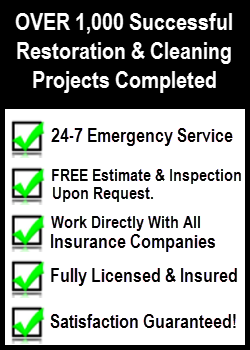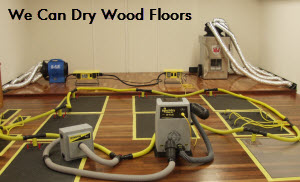OUR SERVICE AREA
|
Monmouth County Aberdeen Middlesex County Avenel Somerset County Basking Ridge Mercer County Bear Tavern Ocean County Barnegat Bergen County Allendale Essex County Academy Hudson County Arlington Hunterdon County Annandale Morris County Boonton Passaic County Allwood Sussex County Andover Union County Baltusrol Warren County Allamuchy Atlantic County Folsom Burlington County Beverly Camden County Albion Cape May County Anglesea Cumberland County Bivalve Gloucester County Almonesson Salem County Alloway |

A water disaster can happen at any moment. We will come any time, day or night, to take care of it. – 732-722-5211
Quick response, professional restoration
Free Consultation, Evaluation, & Estimate | How Water Damage Restoration & Cleanup Works | Water Damage Category | Water Damage Tips
Flood water damage is among the most frequent issues that a homeowner experiences. Water damage, when it happens, can be both quick and dramatic. One minute your house is fine – and the next you have a tremendous water problem.
The Value of Getting the Job Done Quickly
A prompt solution is the key to reducing or removing the loss in water damage. Treating the damage right away can often reduce restoration costs, reduce the chance of mold growth and other contaminants associated with water damage or flooding.

In the event the clean-up process isn’t started immediately, water starts to evaporate on its own.
The air absorbs this evaporated water and redistributes the moisture to other things like ceiling tiles and drywall, resulting in secondary damage.
A few examples of secondary water damage include:
- Mold spores start to colonize within 72 hours
- Hardwood floors begin to buckle
- Plaster and sheetrock sag and crack
- Vinyl loosens from the floor

732-722-5211

We’ll help you get your damage clean and restore your house back to normal. All you have to do is Make An Appointment!
Guaranteed services by well-trained professionals who care!

We aren’t happy unless you are. We guarantee every one of our restorations!
If the water damage your home is experiencing is plumbing or weather related, you should call AllStates Restoration immediately. We know the concern and stress that you’re feeling since these problems are in your home. Let us help.
Our IICRC (Institute of Inspection, Cleaning and Restoration Certification)-certified technicians are available 24-hours-a-day, 7 days a week to take care of your water damage emergency. Our knowledgeable team will do more than just remove the excess water from your property. They possess both the proper knowledge and equipment to dry out your home so it completely returns to its safe, pre-loss condition.
Equally important, we guarantee all of our services. If one of our services is not done right for any reason, we will come back, fix it and make it right, Guaranteed!
Free Consultation Evaluation and Estimate
When you have a water damage problem in your home, call us for a free consultation, inspection, and estimate. AllStates Restoration offers 24-7 Residential Water Damage Service, every day of the year. Call today!
- FREE Consultation, detailed inspection & evaluation of your situation
- Address your clean-up and restoration concerns
- Get all your questions answered
- Estimate in writing
- No pressure, no obligation
To schedule your NJ Residential Water Damage Consultation, Evaluation and Estimate, Call Today! 732-722-5211 or click here.
How Residential Water Damage Restoration and Cleanup Works

Water extraction are used to thoroughly remove water from your floor surface.
From estimation to completion, our experienced team is well-prepared to handle your home’s water damage cleanup and restoration needs. With our help you can rest assured that your assets will be-saved and damage kept minimal.
The main thing our trained technicians will do is use specialized equipment to determine just how severe your water damage problem actually is. Once they’ve evaluated the damage, they’ll remove the standing water from your property.
The actual water removal process itself differs based upon whether the water is under your home or inside of it…
Inside Home or Flooded Basement: We try to get there within 60 minutes when the water damage is inside your home. Our technicians will pump-out/vacuum up water and use an ‘extractor’ to remove water from wooden floors. Furniture will be taken out of effected areas or put up on blocks. If the water damage is from dirty water, carpeting will likely have to be thrown away, but if the water is clean we’ll dry out the carpet and pads if possible.
Carpet pads are thrown away in many cases because on some occasions, it is cheaper to replace them, rather than dry them. If there is water damage affecting a wall, we will remove the baseboard, drill small holes in the wall, and install a wall heater. This can allow hot air to dry out the wall.
Under Home or Crawl Space: First we turn off your water. Next we vacuum up water so that things are no longer soaking wet. In the event the problem was the result of a broken pipe, we’ll make sure that a plumber can access the pipe and make the repair. Once the pipe is fixed, we’ll remove the contaminated soil if needed, spray anti-microbial, and then replace the bad soil with new, fresh soil.
The expertise to do it right

Our technicians take the time to do the job right.
AllStates Restoration has the highest industry certifications in Water Loss Management. Our IICRC-certified field technicians are capable of drying a home completely back to its pre-loss condition. They can handle any size or type of job using advanced drying processes to restore soaked structural materials to their original condition. The same drying techniques can be utilized to inhibit the growth of harmful pathogens like mold and mildew while saving furniture, electronics, flooring and documents.
Our vast inventory of state-of-the-art drying and dehumidification equipment includes anything from water extractors, water pumps, air-movers and dehumidifiers, to dry out large properties.
Our experienced technicians will take the time to carefully assess every perimeter of your home to be sure the job is complete before they leave. Since 2008, we’ve helped restore hundreds if not thousands of water damaged homes throughout New Jersey, New York, Pennsylvania and Connecticut.
Residential Water Damage Category Definitions
According to the IICRC (Institute of Inspection Cleaning and Restoration Certification), which sets the standards for the cleaning industry and water damage restoration training, there are several different levels and classes involved in liquid destruction. From the IICRC’s S-500 guidelines, there are 3 categories describing the type of liquid involved. – To read more about Residential Water Damage Category Definitions
Certain terms and definitions related to water damage restoration exist. These are definitions of terms utilized:
Category 1 Water – Water via a source that doesn’t pose substantial harm to humans. Category 1 water is also referred to as “clean water.” Examples of clean water sources may include, but are not necessarily limited to the following:
- Broken/Burst domestic water supply lines;
- Tub or sink overflows without contaminants;
- Appliance malfunctions involving domestic water supply lines;
- Melting ice or snowfall;
- Falling rainwater; and broken toilet water tanks and toilet bowls that do not contain contaminants or additives.
Clean water that has contact with structural surfaces and content items may deteriorate in cleanliness as it dissolves or mixes with soils and other contaminants, and as time passes.
Category 2 Water – Water that contains a significant degree of chemical, biological and/or physical contamination and having the potential to result in discomfort or sickness if consumed by or exposed to humans. Category 2 water is also often called “gray water.” Gray water contains microorganisms and nutrients for microorganisms.
Examples of gray water sources can include, but aren’t necessarily limited to the following:
- Discharge from dishwashers or washing machines;
- Flows over from toilet bowls along with some urine (no feces)
- Subpump failures;
- Seepage because of hydrostatic pressure;
- Chilled and condensate water; and
- Fire Protection Sprinkler Water.
Gray water could have chemicals, biocontaminants (fungal, bacterial, viral algae) along with other forms of contaminants including physical hazards. Time and temperature aggravate category 2 water contamination levels significantly. In flooded structures, gray water that is still untreated for longer than 48 hours may change to category 3 – black water.
Category 3 Water – Grossly unsanitary water containing pathogenic agents, arising form sewage, flooding or other contaminated water sources and having the possibility of causing discomfort or sickness if consumed or in contact with humans. Black water includes sewage and other contaminated water sources entering or affecting the indoor environment. Category 2 water that isn’t removed promptly from the structure may be reclassified as category 3 water. Toilet back flows that originated beyond the toilet trap are viewed as black water contamination, in spite of visible content or color.
Category 3 water consists of, but isn’t necessarily limited to all forms of flooding from:
- Sewage/rainwater mixed; and
- Rising water from streams or rivers.
Such water sources have sewage and organic matter into structure building and create black water conditions.
Residential Water Damage Tips
- Shut off power outlets and electric appliances in or near flooded areas, only if it is safe to do so. You shouldn’t tackle any electric devices while standing in flood water.
- Be sure that the water source is turned off.
- Remove anything from the floor, including wet rugs.
- Remove paper products from the source of water immediately.
- Mop up just as much water as possible.
- Move artwork to a dry place.
- Move all furniture out of the effected areas.
- Prop up wet furniture cushions for even drying.
- Open drawers and closet doors to reduce drying time.
- Wipe down furniture to remove excess moisture.
To schedule appointment, call 732-722-5211 or click here
